Planting Spring Bulbs Outside, Indoors, in Fibre
Spring can be a wonderful time after the cold depths of winter. It is the time for renewed hope, new lambs and spring bulbs. Nowadays there are so many wonderful bulbs to choose from that making a choice can be really overwhelming. By planning your spring garden, you can make better choices and have a more successful display.
The first thing to do is to look at your garden and decide where it is you want to plant your bulbs. Identify which areas need a splash of colour and decide on some sort of colour scheme for these areas. Make sure that the colours of you new bulbs won't clash with your existing plants and colour schemes and what will be flowering at the same time as your new bulbs.
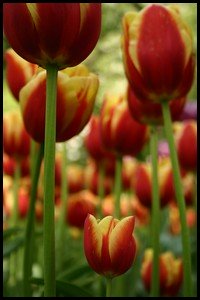 Spring bulbs are
meant to be planted en-mass. Never plant individual bulbs as they will
just look silly and out of place.
Spring bulbs are
meant to be planted en-mass. Never plant individual bulbs as they will
just look silly and out of place.
In nature they bloom in vast swathes, and that is what you want to copy. You can never plant too many bulbs in an area, and they are also cheaper when buying in bulk.
Traditionally when we think of growing bulbs we think of daffodils, tulips, bluebells etc. for cold climates.
However, for those of you who live in warmer climates you can also plant bulbs but just not the ones mentioned. You can plant bulbs such as babiana, sparaxis, freesias, ranunculus and Spanish bluebells which are native to warmer climates.
Storing Bulbs in the Fridge before Planting Them
If you live in a cold climate but your winter hasn't been as cold as you thought it should have been you can store bulbs such as tulips, daffodils, jonquils, Dutch irises, hyacinths, grape hyacinths and bluebells and place them in an air-tight plastic container in your vegetable drawer for 6 weeks prior to planting.
In fact, I do this with
all my bulbs and always have success with them. They really like the
cold weather, and so even if you don't have a warm snap, it is still
worth doing this, to make sure that your bulbs will give you a good
show when they finally come into flower. And let's face it, the
flowering time is so short, that it is worth going the extra mile.
When to Plant Spring Bulbs:
If you live in the northern hemisphere then you want to get your bulbs into the ground in October. If you plant your bulbs in October, you can expect to see them flowering in April. If you live in the southern hemisphere, you are looking at March for planting.
Where to Plant Spring Bulbs:
Bulbs like a place where they will get full sun. Plant in free-draining soil as your bulbs will rot if they are constantly standing with their feet in water.
You can plant bulbs in window-boxes, in flower beds, pots, rock gardens, lining pathways, or even in the grass. Wherever grass will grow, so will daffodils and narcissus.
If you are going to plant bulbs in pots and containers like window-boxes, then make sure that the soil contains a liberal amount of small charcoal pieces. The charcoal will not only help with drainage and purifying the soil, but it will also help in preventing the soil from souring.
The best containers to grow bulbs in are those made of soft-baked, porous clay that are shallow and wide-mouthed.
How to Plant Spring Bulbs:
As a rule of thumb you usually plant bulbs twice the depth of the bulb's width, making sure that the soil to this depth is good. If you live in an area with light, sandy soil, then it would be safer to plant bulbs such as daffodils to a depth of 6 inches.
Position your spring bulbs with the point facing upwards, except ranunculus and anemones which should be planted with the pointy end down. They like soil that has lots of added compost. But don't add manure to the soil at this stage.
Rather the soil should
retain the moisture without being soaking wet, and soil that is airy
and filled with humus are ideal growing conditions for bulbs. They also
like a bit of shade, if you can provide it.
Before you plant your spring bulbs out it is a wise idea to lie them on top of the prepared soil first. This allows you to see the spacings of the bulbs and the desired shape in which they will grow. This is especially important where you want to create an effect of 2 or more bands of colours flowing into one another.
However, if you want to plant your bulbs in the grass, then just throw your bulbs lightly onto the grass and plant them where they fall. This will give you a more natural look, as if they have been planted by nature herself.
Spring Bulbs & Growing Conditions:
Water your bulbs wisely. If the rains are falling then you don't need to water your bulbs. However, if there is a dry spot you will need to water them once in a while, until the bulbs start to shoot. After that, water only 2-3 times a week to make sure that the bulbs are getting enough water to flower.
Apply liquid manure to your bulbs before and after flowering. This gives your bulbs the boost they need to flower well, and to also feed the bulbs and prepare them for the following season.
Spring Bulbs & What to Do with Bulbs After they Have Flowered:
After they have flowered and the season has ended let the bulbs die back naturally. This allows the bulbs to draw food from the leaves and the energy they will need to bloom for you next spring.
Many people like to dig the bulbs up after they have flowered and store them in a cool, dark airy place until they need them again. Others, like myself, like to leave them in the ground so that they are left to their own devices, multiply and produce a more spectacular show each subsequent year. However, you can only do this in areas where you won't need to dig during other times of the year.
10 Tips for Growing Bulbs
- * Plant your bulbs deep
- * Plant in fertile, well-drained soil
- * Use lots of compost in your beds
- * Mass plant using one color at a time for best effects
- * Keep flowering dates in mind when planting your bulbs out with other bulbs or flowers.
- * Plant a succession of bulbs for flowering throughout the year. Snowdrops and Glory-of-the-snow start of the bulb season, followed by say lillies for a summer display. Dahlias will bloom for you in the fall.
- * Plant tulips to a depth of 8 inches rather than the usual 6 inches, and they will last a lot longer, than usual.
- * Top dress in the fall with bone meal or well-rotted manure
- * Top dress again in the spring as bulbs emerge again with bone meal or manure.
- Only select the bulbs that will do well in your area.
Planting Specific Spring Bulbs:
Hyancinths:
Hyacinths do well in light soil and in a sunny position. If you have soil that is fairly heavy, you can still plant hyacinths, as long as you add more sand to your soil.
Spade the soil where you are going to be planting your hyacinth bulbs to a depth of about 12 inches. Now plant the bulbs at a depth of about 6 inches on top of a handful of sand into each hole to make sure that you will get the drainage they need. But try and plant some bulbs deeper than others. This will result in different flowering times.
Plant the bulbs about 6 inches apart, but don't firm the soil around the planting area too firmly. Once the ground starts to freeze, take some straw and place over the top of the planted area. This will help protect them, and leave this in place until winter is over.
Growing Spring Bulbs Indoors
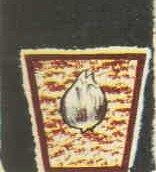 Almost all spring bulbs can
be grown indoors. The only issue being that they won't often flower the
following year unless they are replanted out in the open again.
Almost all spring bulbs can
be grown indoors. The only issue being that they won't often flower the
following year unless they are replanted out in the open again.You can use the above soil mixture for other bulbs, besides hyacinths for your containers, or you can use this soil mixture: 4 parts loam soil, 1 part leaf mold and 1 part sand. Add this altogether and then add a small amount of bone dust or bone meal to the soil. Finally add the crushed pieces of charcoal to the soil, and you are ready to go. At no time should you allow the soil to become dry.
It is also advisable to rotate the container or pot once in a while so that the plants receive equal amounts of light and will grow evenly.
Choosing 5 inch to 7 inch pots for growing either single or multiple bulbs is the traditional way of planting. Baked clay pots work better than plastic pots as they hold the moisture in.
Growing Spring Bulbs in Bulb Fibre
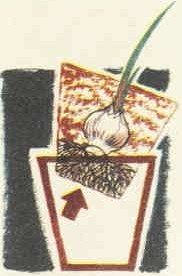 Place your bulb fibre in a bowl
and fill the bowl with water. Then pour
off the excess water and squeeze as much of the water out of the
material.
Place your bulb fibre in a bowl
and fill the bowl with water. Then pour
off the excess water and squeeze as much of the water out of the
material.
Now fill your pots with the bulb fibre. Plant your spring bulbs so that the tops are just above the level of the fibre. Firm down, slightly around the bulb and water lightly again.
Leave your bulb pots in a dark, cold room, such as a cellar for 6-8 weeks to allow the bulbs to grow their roots.
You will need to check from time to time to see if they have enough roots or not.
Once the roots have developed bring out your pots and put them in a warm, lighted room where you want them to flower.
Growing Bulbs in Containers for Indoors:
Hyancinths are ideal spring bulbs to grow in containers but you have to make sure that you buy the large bulbs. You can either grow single hyacinths in a 5 inch pot, or you can plant 3 bulbs quite comfortably in a 7 inch pot.The best potting soil for hyacinths can be made by taking 2 parts loam and mixing it with 1 part pulverized sheep manure. Add the broken up charcoal and add it to your soil mixture. You now have the ideal growing medium.
 Fill the container
or pot with your soil mixture. Then plant the hyacinth bulb leaving
about one third of it exposed.
Fill the container
or pot with your soil mixture. Then plant the hyacinth bulb leaving
about one third of it exposed. Now take the bowl and your planted bulb and bury it to a depth of 6 inches under the soil. Leave it in the open for 6-8 weeks.
This is done to encourage the bulb to grow roots, which it will, as long as the temperature outside doesn't fall below 48 degrees F.
If you live in a very cold area, and you still want to grow bulbs in pots, then take your pots and place them in a dark, cool spot such as a cellar for the 6-8 weeks instead.
Now you can bring it back inside. The warmth of the house will then force the bulb into growth and flower. You can do this from October through to November to get a succession of blooms.
 Make sure that you
keep watering your bulbs properly.
Make sure that you
keep watering your bulbs properly. Too much water and the bulbs will rot. Too little water and the bulbs will be blind, that is they won't flower. You need to make sure that the soil is damp but never saturated.
Keep the soil damp and when the bulb sends up a flower spike you can then give your plant an application of liquid manure.
Growing Tulips in Containers for Indoors:
The planting distance between the bulbs should be 4-6 inches in the ground. However, if you are planting them in a 5 inch pot, you can pot 3 - 5 bulbs in each pot.
Growing Narcissus in Containers for Indoors:
Like daffodils, narcissus are very hardy bulbs and will grow in just about any soil. However, they seem to do better when they are planted in stiff soil in a shaded location.Again you can grow narcissus in containers and you can follow the same instructions for planting tulips above.
Other Spring Bulbs:
Crocuses are often planted so that they touch one an other in the pots and about an inch below the surface.Grape hyacinths, freesias, and snowdrops can be planted as closely as possible about an inch below the surface.
Anemones may be put about half an inch below the surface, but the number per pot will be governed by the size of the bulbs.
Spanish iris may be planted in 5 inch pots at the rate of three or five bulbs, according to size. If you are using 7 inch pots will take seven or nine bulbs.
English irises are considerably larger and fewer bulbs should be used than the Spanish variety, for the same size of pots mentioned.
If you have enjoyed this article on spring bulbs, please feel free to share this with your friends, or give us a Like on Facebook below.
Other Gardening Resources you May be Interested in
Go from Spring Bulbs to Organic GardeningGo to Spring Gardening
Go to Spring Planting Tips
Go to Cottage Gardens
Go to Growing Roses
Don't miss out on our latest news and articles. Sign up for our free monthly e-zine!
Go to Countryfarm Lifestyles and Homesteading




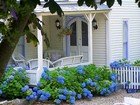


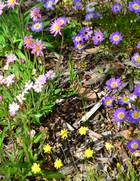

New! Comments
Do you have something of value to add? Leave me a comment in the box below.